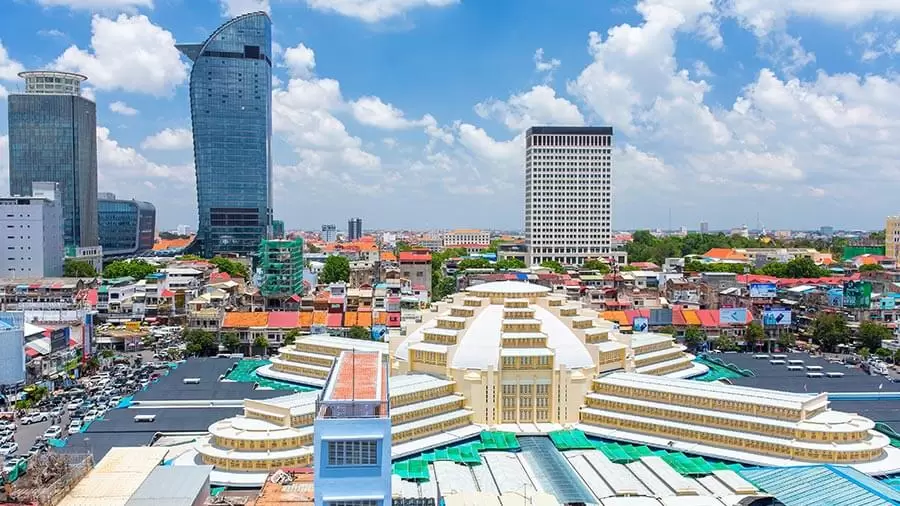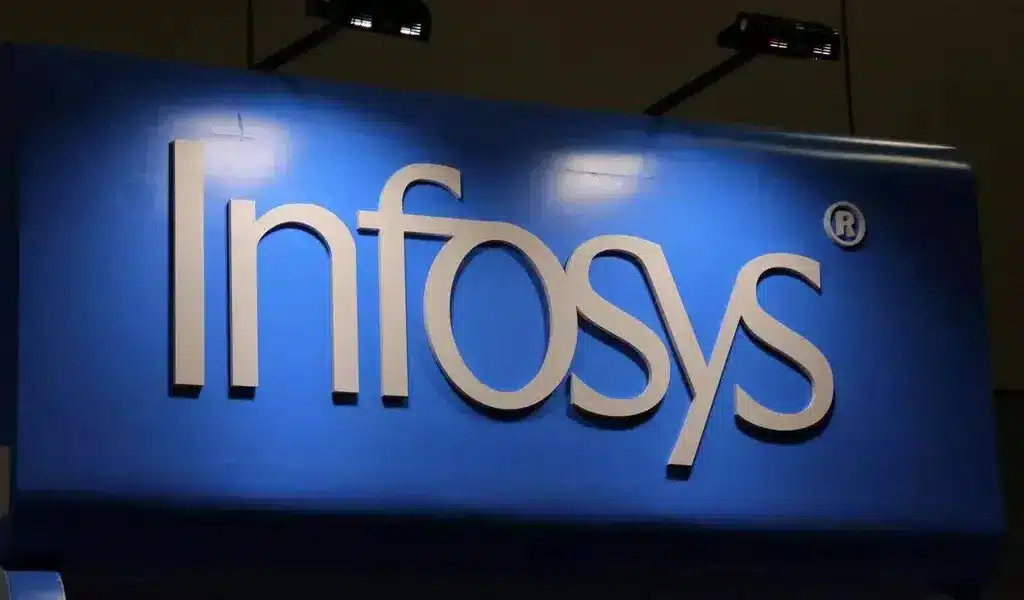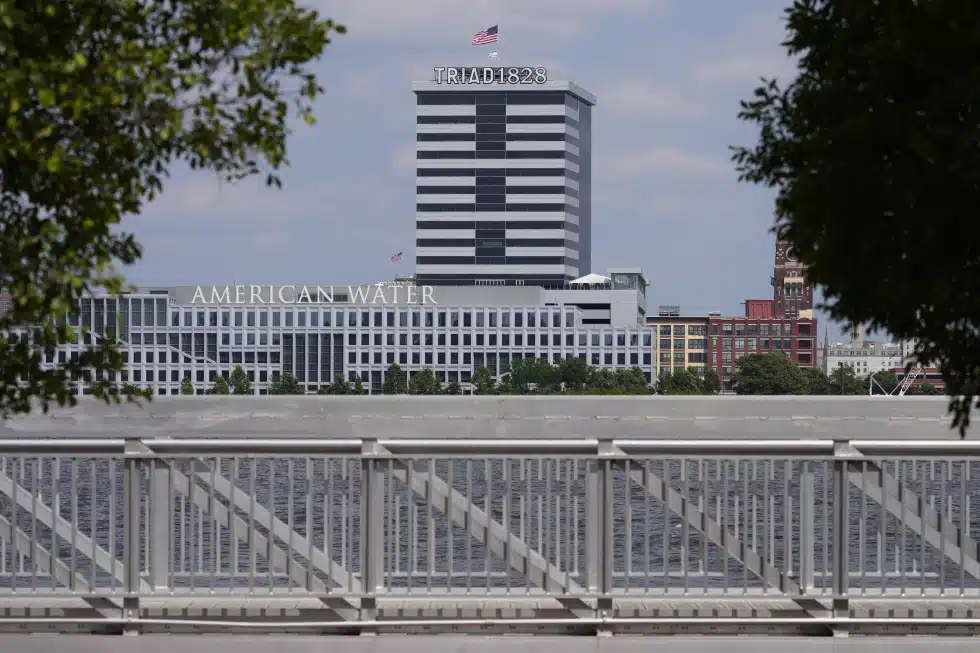Business
The Impact of Cambodia’s Real Estate Tax on Investors in 2023
Whenever people think of investing in foreign real estate or local real estate, tax is the significant element that needs to be analysed to get the perfect estimate of the expenses of profits on the particular investment.
Suppose you’re planning for foreign investment in Cambodia. In that case, the assistance of rewarded local real estate agents like IPS Cambodia can make the tax understanding of the foreign country easier for investors.
Overview of Real Estate Tax in Cambodia
Cambodia, famous for its architecture and garment industry, is one of the fastest-growing economies in the world. Tourism, the garment industry, and construction have been the main reasons for driving this growth. Cambodia’s real estate market is one of the most lucrative markets to book profit.
With the nation’s rising economy and development, the real estate market is bound to boom. Although additional Property tax in Cambodia can be a downer for a home buyer or investor, it is ultimately a profitable bet as Cambodia’s properties will appreciate with time.
| Price Brackets | Standard Rates | Second Home Rates |
| £250,001 – £925,000 | 5% | 8% |
| £925,001 – £1.5m | 10% | 13% |
| over £1.5m | 12% | 15% |
IPS has been tracking the real estate market over the years and helping its clients take advantage and gain by guiding them to invest in the right property. Be it renting/buying/property valuation, IPS Cambodia keeps track of the market trends and reviews them regularly for the client’s benefit.
Positive Impact Of Cambodia’s Real Estate Tax On Investors

Fairness And Transparency:
The real estate tax helps to ensure that the real estate market is fair and transparent by creating a level playing field for all investors. The tax is applied equally to all properties, regardless of who owns them or how they are used. This helps prevent corruption and ensures that investors are not disadvantaged.
Revenue For The Government:
The real estate tax provides a source of revenue for the government, which can be used to invest in infrastructure and other public services. This helps to improve the quality of life for all Cambodians, including investors.
Deter Speculation And Encourage Long-Term Investment:
The real estate tax helps to deter speculation and encourage long-term investment in the real estate market. This is because the tax makes it more expensive to buy and sell properties, discouraging investors from buying properties to sell them quickly for a profit. This helps to stabilise the real estate market and make it more attractive to long-term investors.
Overall, Cambodia’s real estate tax positively impacts investors by ensuring a fair and transparent market, providing a source of revenue for the government, and deterring speculation and encouraging long-term investment.

Negative Impact of Cambodia’s real estate tax on Investors
Increased Financial Burden –
Paying tax is an extra burden on the buyer or investor. When buying or investing in a property, one has to keep an additional amount as a buffer on top of the property’s price.
Reduced Profit Margins –
Adding a tax increases the financial burden and, in turn, reduces an investor’s profitability. It can also affect the affordability of many buyers as it may be out of their budget after adding the taxes.
Investment Decision-Making –
With an increase in property tax, many people postpone the decision to buy or invest in a property.
Market Slowdown –
As property transactions come down due to taxes or any hike, the real estate market slows down as fewer transactions occur. People invest based on their risk profile, and tariffs add additional costs to their decision to invest or buy a property.
Compliance and Administrative Costs –
The government incurs the administrative costs in administering the tax system, and the private sector or taxpayers incur the compliance cost. One must also keep that amount in consideration when investing in a property.
Tips to Keep in Mind When Investing in Cambodian Real Estate
If you plan to invest in Cambodia’s real estate market, here are some pointers you need to evaluate while considering the probability of putting your hard-earned money into a real estate market in Cambodia.
- Investing in the right property at the right time is the key. Knowing and understanding the market trend in the real estate market and the extra costs like property tax and administrative fees should be well accounted for in the decision-making.
- Cambodia’s real estate market is expected to grow significantly in 2023.
- Any property/real estate transaction involves some tax to be paid to the government. Property Tax in Cambodia, known as the Tax on Immovable Properties TOIP, imposes a 0.1% on all immovable properties with an assessed value exceeding Khmer Riel 100 Million (or approximately USD 25,000). Immovable properties include land, houses, infrastructures, buildings, etc.
- Properties like agricultural land, industrial land, state-owned land and anything below the above value are tax-exempt.
Conclusion
Buying or investing in a property is a decision after a complete thought process considering the various extra elements like the attached property tax. There are many positives to paying taxes as the Government uses that pool of money to meet citizens’ needs. The tax money is invested in buildings, new infrastructure, museums, parks, etc.
The team at IPS Cambodia understands your needs and financial capacities and helps you decide on a property that suits your needs and falls within your budget. They allow you to understand the tax structure in Cambodia’s real estate market, guide you on reducing the burden and help you calculate and know the tax liability when buying or investing in a property.

Business
PepsiCo Reduces Revenue Projections As North American Snacks And Key International Markets Underperform.

(VOR News) – In the third quarter of this year, Pepsi’s net income was $2.93 billion, which is equivalent to $2.13 per share. This was attributed to the company.
This is in stark contrast to net income of $3.09 billion, which is equivalent to $2.24 per share, during the same period in the previous year. The company’s earnings per share were $2.31 when expenses were excluded.
Net sales decreased by 0.6%, totaling $23.32 billion. Organic sales increased by 1.3% during the quarter when the effects of acquisitions, divestitures, and currency changes are excluded.
Pepsi’s beverage sales fell this quarter.
The most recent report indicates that the beverage and food sectors of the organization experienced a 2% decline in volume. Consumers of all income levels are demonstrating a change in their purchasing habits, as indicated by CEOs’ statements from the previous quarter.
Pepsi’s entire volume was adversely affected by the lackluster demand they encountered in North America. An increasing number of Americans are becoming more frugal, reducing the number of snacks they ingest, and reducing the number of times they purchase at convenience stores.
Furthermore, Laguarta observed that the increase in sales was partially attributed to the election that occurred in Mexico during the month of June.
The most significant decrease in volume was experienced by Quaker Foods North America, which was 13%. In December, the company announced its initial recall in response to a potential salmonella infection.
Due to the probability of an illness, the recall was extended in January. Pepsi officially closed a plant that was implicated in the recalls in June, despite the fact that manufacturing had already been halted.
Jamie Caulfield, the Chief Financial Officer of Pepsi and Laguarta, has indicated that the recalls are beginning to have a lessening effect.
Frito-Lay experienced a 1.5% decline in volume in North America. The company has been striving to improve the value it offers to consumers and the accessibility of its snack line, which includes SunChips, Cheetos, and Stacy’s pita chips, in the retail establishments where it is sold.
Despite the fact that the category as a whole has slowed down in comparison to the results of previous years, the level of activity within the division is progressively increasing.
Pepsi executives issued a statement in which they stated that “Salty and savory snacks have underperformed year-to-date after outperforming packaged food categories in previous years.”
Pepsi will spend more on Doritos and Tostitos in the fall and winter before football season.
The company is currently promoting incentive packets for Tostitos and Ruffles, which contain twenty percent more chips than the standard package.
Pepsi is expanding its product line in order to more effectively target individuals who are health-conscious. The business announced its intention to acquire Siete Foods for a total of $1.2 billion approximately one week ago. The restaurant serves Mexican-American cuisine, which is typically modified to meet the dietary needs of a diverse clientele.
The beverage segment of Pepsi in North America experienced a three percent decrease in volume. Despite the fact that the demand for energy drinks, such as Pepsi’s Rockstar, has decreased as a result of consumers visiting convenience stores, the sales of well-known brands such as Gatorade and Pepsi have seen an increase throughout the quarter.
Laguarta expressed his opinion to the analysts during the company’s conference call, asserting, “I am of the opinion that it is a component of the economic cycle that we are currently experiencing, and that it will reverse itself in the future, once consumers feel better.”
Additionally, it has been noted that the food and beverage markets of South Asia, the Middle East, Latin America, and Africa have experienced a decline in sales volume. The company cut its forecast for organic revenue for the entire year on Tuesday due to the business’s second consecutive quarter of lower-than-anticipated sales.
The company’s performance during the quarter was adversely affected by the Quaker Foods North America recalls, the decrease in demand in the United States, and the interruptions that occurred in specific international markets, as per the statements made by Chief Executive Officer Ramon Laguarta.
Pepsi has revised its forecast for organic sales in 2024, shifting from a 4% growth rate to a low single-digit growth rate. The company reiterated its expectation that the core constant currency profitability per share will increase by a minimum of 8% in comparison to the previous year.
The company’s shares declined by less than one percent during premarket trading. The following discrepancies between the company’s report and the projections of Wall Street were identified by LSEG in a survey of analysts:
SOURCE: CNBC
SEE ALSO:
Old National Bank And Infosys Broaden Their Strategic Partnership.
Business
Old National Bank And Infosys Broaden Their Strategic Partnership.

(VOR News) – Old National Bank, a commercial bank with its headquarters in the Midwest, and Infosys, a firm that specializes in information technology, have recently entered into a strategic expansion of their link, which has been in place for the past four years.
This expansion is more likely to take place sooner rather than later, with the likelihood being higher.
For the purpose of making it possible for Old National Bank to make use of the services, solutions, and platforms that are offered by Infosys, the objective of this expansion is to make it possible for the bank to transform its operations and processes through the application of automation and GenAI, as well as to change significant business areas.
This lets the bank leverage Infosys’ services, solutions, and platforms.
Old National Bank Chairman and CEO Jim Ryan said, “At Old National, we are committed to creating exceptional experiences for both our customers and our fellow employees.”
This statement is applicable to Old National Bank. Infosys is carefully managing the business process innovations that it is putting us through, putting a strong emphasis on efficiency and value growth throughout the process to ensure that it is carried out efficiently.
This is a routine occurrence throughout the entire operation. Because of Infosys’ dedication to our development and success, we are incredibly appreciative of the assistance they have provided.
Old National has been receiving assistance from Infosys in the process of updating its digital environment since the year 2020, according to the aforementioned company.
Ever since that time, the company has been providing assistance. The provision of this assistance has been accomplished through the utilization of a model that is not only powerful but also capable of functioning on its own power.
Infosys currently ranks Old National thirty-first out of the top thirty US banks.
This ranking is based on the fact that Old National is the nation’s largest banking corporation.
It is estimated that the total value of the company’s assets is approximately fifty-three billion dollars, while the assets that are currently being managed by the organization are valued at thirty billion dollars.
Dennis Gada, the Executive Vice President and Global Head of Banking and Financial Services, stated that “Old National Bank and Infosys possess a robust cultural and strategic alignment in the development, management, and enhancement of enterprise-scale solutions to transform the bank’s operations and facilitate growth.”
This remark referenced the exceptional cultural and strategic synergy between the two organizations. Dennis Gada is the one who asserted this claim. This was articulated explicitly concerning the exceptional cultural congruence and strategy alignment of the two organizations.
We are pleased to announce that the implementation of Infosys Topaz will substantially expedite the transformation of Old National Bank’s business processes and customer service protocols. We are exceedingly enthusiastic about this matter. We are quite thrilled about this specific component of the scenario.
Medium-sized banks operating regionally will continue to benefit from our substantial expertise in the sector, technology, and operations. This specific market segment of Infosys will persist in benefiting from our extensive experience. This phenomenon will enable this market sector to sustain substantial growth and efficiency benefits.
SOURCE: THBL
SEE ALSO:
American Water, The Largest Water Utility In US, Is Targeted By A Cyberattack
States Sue TikTok, Claiming Its Platform Is Addictive And Harms The Mental Health Of Children
Qantas Airways Apologizes After R-Rated Film Reportedly Airs On Every Screen During Flight
Business
American Water, The Largest Water Utility In US, Is Targeted By A Cyberattack

The largest regulated water and wastewater utility company in the United States stated Monday that it had been the target of a cyberattack, forcing the company to halt invoicing to consumers.
American Water, The Largest Water Utility In US, Is Targeted By A Cyberattack
American Water, based in New Jersey and serving over 14 million people in 14 states and 18 military facilities, said it learned of the unauthorized activity on Thursday and quickly took precautions, including shutting down certain systems. The business does not believe the attack had an impact on its facilities or operations and said employees were working “around the clock” to determine the origin and scale of the attack.

According to their website, American Water operates over 500 water and wastewater systems in around 1,700 communities across California, Georgia, Hawaii, Illinois, Indiana, Iowa, Kentucky, Maryland, Missouri, New Jersey, Pennsylvania, Tennessee, Virginia, and West Virginia.
SOURCE | AP
-

 News3 years ago
News3 years agoLet’s Know About Ultra High Net Worth Individual
-
Entertainment2 years ago
Mabelle Prior: The Voice of Hope, Resilience, and Diversity Inspiring Generations
-

 Health3 years ago
Health3 years agoHow Much Ivermectin Should You Take?
-

 Tech2 years ago
Tech2 years agoTop Forex Brokers of 2023: Reviews and Analysis for Successful Trading
-

 Lifestyles3 years ago
Lifestyles3 years agoAries Soulmate Signs
-

 Movies2 years ago
Movies2 years agoWhat Should I Do If Disney Plus Keeps Logging Me Out of TV?
-

 Health3 years ago
Health3 years agoCan I Buy Ivermectin Without A Prescription in the USA?
-

 Learning2 years ago
Learning2 years agoVirtual Numbers: What Are They For?